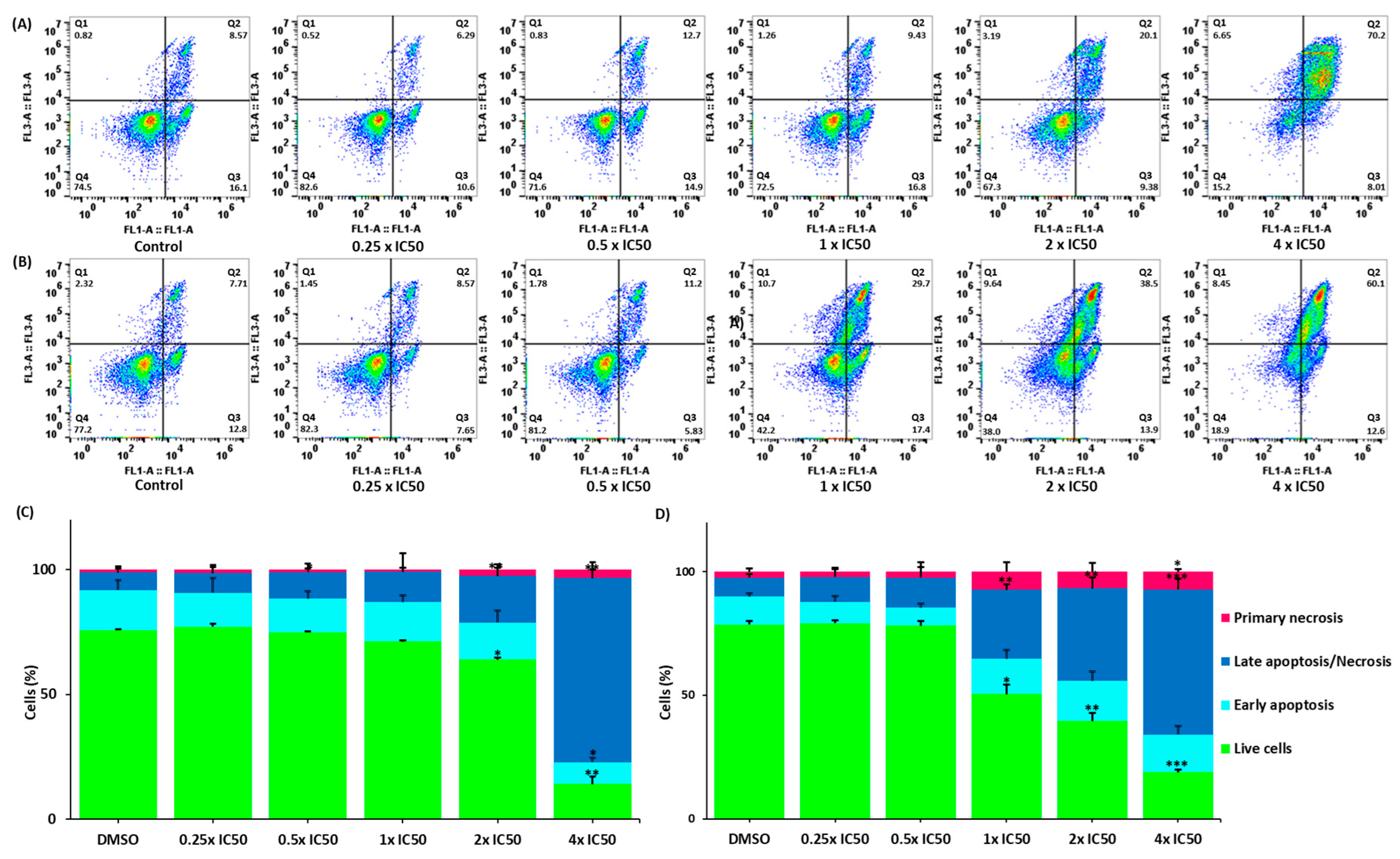Correction: Drif et al. Anti-Inflammatory and Cancer-Preventive Potential of Chamomile (Matricaria chamomilla L.): A Comprehensive In Silico and In Vitro Study. Biomedicines 2024, 12, 1484
Text Correction
Figure Legend
Error in Figure

Reference
- Drif, A.I.; Yücer, R.; Damiescu, R.; Ali, N.T.; Abu Hagar, T.H.; Avula, B.; Khan, I.A.; Efferth, T. Anti-Inflammatory and Cancer-Preventive Potential of Chamomile (Matricaria chamomilla L.): A Comprehensive In Silico and In Vitro Study. Biomedicines 2024, 12, 1484. [Google Scholar] [CrossRef] [PubMed]
Disclaimer/Publisher’s Note: The statements, opinions and data contained in all publications are solely those of the individual author(s) and contributor(s) and not of MDPI and/or the editor(s). MDPI and/or the editor(s) disclaim responsibility for any injury to people or property resulting from any ideas, methods, instructions or products referred to in the content. |
© 2025 by the authors. Licensee MDPI, Basel, Switzerland. This article is an open access article distributed under the terms and conditions of the Creative Commons Attribution (CC BY) license (https://creativecommons.org/licenses/by/4.0/).
Share and Cite
Drif, A.I.; Yücer, R.; Damiescu, R.; Ali, N.T.; Abu Hagar, T.H.; Avula, B.; Khan, I.A.; Efferth, T. Correction: Drif et al. Anti-Inflammatory and Cancer-Preventive Potential of Chamomile (Matricaria chamomilla L.): A Comprehensive In Silico and In Vitro Study. Biomedicines 2024, 12, 1484. Biomedicines 2025, 13, 1595. https://doi.org/10.3390/biomedicines13071595
Drif AI, Yücer R, Damiescu R, Ali NT, Abu Hagar TH, Avula B, Khan IA, Efferth T. Correction: Drif et al. Anti-Inflammatory and Cancer-Preventive Potential of Chamomile (Matricaria chamomilla L.): A Comprehensive In Silico and In Vitro Study. Biomedicines 2024, 12, 1484. Biomedicines. 2025; 13(7):1595. https://doi.org/10.3390/biomedicines13071595
Chicago/Turabian StyleDrif, Assia I., Rümeysa Yücer, Roxana Damiescu, Nadeen T. Ali, Tobias H. Abu Hagar, Bharati Avula, Ikhlas A. Khan, and Thomas Efferth. 2025. "Correction: Drif et al. Anti-Inflammatory and Cancer-Preventive Potential of Chamomile (Matricaria chamomilla L.): A Comprehensive In Silico and In Vitro Study. Biomedicines 2024, 12, 1484" Biomedicines 13, no. 7: 1595. https://doi.org/10.3390/biomedicines13071595
APA StyleDrif, A. I., Yücer, R., Damiescu, R., Ali, N. T., Abu Hagar, T. H., Avula, B., Khan, I. A., & Efferth, T. (2025). Correction: Drif et al. Anti-Inflammatory and Cancer-Preventive Potential of Chamomile (Matricaria chamomilla L.): A Comprehensive In Silico and In Vitro Study. Biomedicines 2024, 12, 1484. Biomedicines, 13(7), 1595. https://doi.org/10.3390/biomedicines13071595





